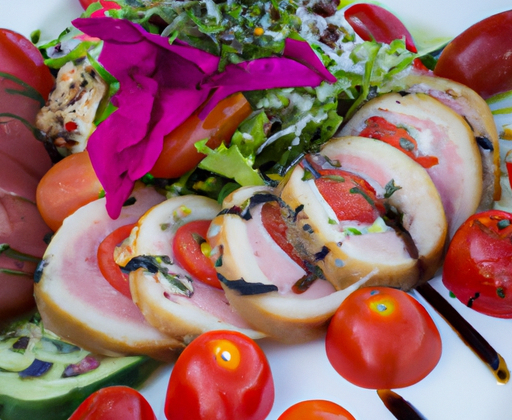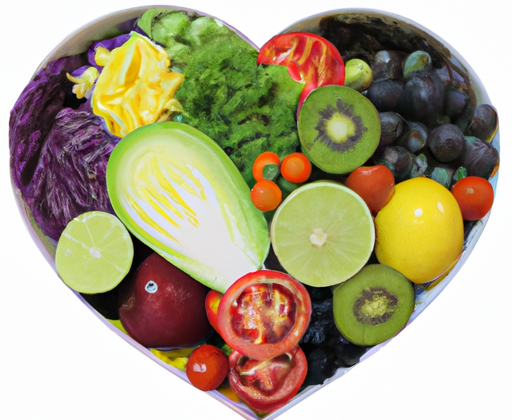Prepare your taste buds for an adventurous journey into the vibrant world of Indian cuisine! Known for its rich blend of flavors and aromatic ingredients, Indian cuisine is a delightful combination of spices, herbs, and regional variations that never fail to tantalize the senses.
Now, hold your horses, because we’re about to embark on this flavor-packed extravaganza! Get ready to taste the true essence of India through its diverse culinary offerings and discover the unique flavors that make Indian cuisine so coveted around the globe.
Spices in Indian Cuisine: Adding a flavor-packed punch!
Ah, spices, the soul of Indian cuisine! Let me take you on a flavorful journey through the aromatic world of spices that make our dishes so extraordinary. From fiery red chilies to fragrant cumin seeds, we use a wide variety of spices to create the perfect balance of flavors in our dishes.
Oh, the types of spices we have! There’s turmeric, known for its vibrant yellow hue and numerous health benefits. Then there’s the mighty cardamom, which adds a touch of sweetness and warmth to any dish. Of course, I can’t forget about the bold and pungent flavor of mustard seeds, the backbone of many Indian recipes.
Now, let me tell you, spices aren’t just for taste, my friend. They come with a boatload of health benefits too! Take ginger, for example. It’s not just a zesty addition to curries, but it also aids digestion and boosts your immune system. And don’t even get me started on the magical properties of cinnamon! It can lower blood sugar levels and fight inflammation.
So, my fellow spice enthusiasts, the next time you dive into a delicious Indian curry or biryani, remember the spices that dance together to create that unforgettable burst of flavors. They not only make our food taste incredible but also bring a plethora of health benefits to the table. Isn’t that just incredible?
Aromatic Herbs
When it comes to cooking delicious Indian dishes, aromatic herbs play a vital role in enhancing the flavors and giving that unique touch. Let me introduce you to some of the fantastic herbs used in Indian cuisine that will make your taste buds dance with joy!
First off, we have the legendary coriander leaf, commonly known as cilantro. This herb is widely used in Indian cooking and adds a refreshing and citrusy flavor to the dishes. It pairs perfectly with spicy curries and gives a delightful aroma.
Next up, we have curry leaves, which are not to be confused with curry powder. These leaves have a distinct flavor that can’t be replicated, adding a subtle hint of citrus and spice. They are a must-have in dishes like South Indian curries and chutneys.
Moving on, we have the aromatic holy basil, also known as tulsi. This herb is considered sacred in India and is used in various dishes and teas. Holy basil has a strong peppery taste and gives a unique earthy aroma to the food.
Another herb that deserves a mention is fenugreek leaves. They are used both fresh and dried and have a slightly bitter taste that complements spicy dishes. These leaves are commonly found in North Indian curries and add depth of flavor.
Last but not least, let’s not forget about mint leaves. They are extremely refreshing and add a cool, menthol-like flavor to dishes. Mint leaves are a common ingredient in chutneys, biryanis, and refreshing beverages like mint lemonade.
So there you have it, a taste of the aromatic herbs that bring the magic to Indian cuisine. Incorporating these herbs into your cooking will take your Indian dishes to a whole new level of deliciousness!
Regional Variations
Now let’s dive into the fascinating regional variations in Indian cuisine! Trust me, you won’t be disappointed. Each part of India has its own unique culinary traditions that will make your taste buds dance with joy. So, grab a plate and let’s take a culinary tour across the country!
North India
Ah, North India, the land of rich and spicy flavors! Here, you’ll find dishes like butter chicken and rajma chawal that will leave you licking your fingers. The use of aromatic spices like cumin, coriander, and cardamom is common in this region, giving the dishes a fragrant and robust taste. And don’t forget about the famous tandoori naan and paneer tikka! You simply can’t resist them.
South India
Down in South India, the cuisine takes a different turn. Get ready to tantalize your taste buds with the flavors of coconut, curry leaves, and mustard seeds. From dosas and idlis to spicy curries like biryani and sambar, South Indian food is a true delight. The liberal use of coconut and tamarind make these dishes tangy and mouthwatering. Trust me, once you try a crisp masala dosa, you’ll never look back!
East India
Heading to East India, it’s all about the flavors of mustard oil and panch phoron, a blend of five spices. The cuisine here has a perfect balance of sweet and savory. From mouthwatering dishes like macher jhol (fish curry) and chhena poda (a heavenly dessert made from cottage cheese), the cuisine of East India will transport you to a different world. It’s a party for your taste buds!
West India
Last but not least, we have the vibrant cuisine of West India. Here, the cuisine is influenced by the flavors of Gujarat, Maharashtra, Rajasthan, and more. From the spicy flavors of Vada Pav and Pav Bhaji to the mouthwatering sweetness of Shrikhand and Modak, the cuisine of West India has something for everyone. Get ready for a culinary adventure!
So there you have it, my friends! The regional variations in Indian cuisine will surely satisfy your cravings for bold, spicy, and aromatic flavors. Each region has its own unique culinary traditions that are worth exploring. So, go ahead and dive into the rich and diverse world of Indian cuisine. Your taste buds will thank you!
Popular Dishes
Now, let me tell you about some mouthwatering dishes that are popular in Indian cuisine. Get ready for some deliciousness! First up, we have the iconic samosa. These crispy, deep-fried pastries are filled with a spicy potato and pea mixture. They are perfect as a snack or even as an appetizer at parties.
Next, we have the delectable biryani, a fragrant rice dish that is packed with flavorful spices, tender meat, or vegetables. Each region in India has its own distinct style of making biryani, so there is always something new to explore.
If you’re a fan of savory and tangy snacks, you can’t miss out on trying dhokla. This steamed savory cake made from fermented batter is a popular street food in Gujarat. It’s light and fluffy with a hint of sweetness and served with a spicy chutney made from green chilies and coriander.
Now, let’s move on to the tantalizing tandoori chicken. This dish is marinated in a mixture of yogurt and spices and cooked in a traditional clay oven called a tandoor. The result is juicy and flavorful chicken with a beautiful smoky aroma. It’s a must-try for any meat lover.
So there you have it, some of the most popular dishes in Indian cuisine. Each dish offers a unique and unforgettable flavor profile that will leave you wanting more. Whether you prefer something crispy, spicy, or smoky, Indian cuisine has something to satisfy every taste bud. Don’t hesitate to dive into this culinary adventure!
Conclusion: My Flavorful Journey through the Delights of Indian Cuisine
Wowza! Let me tell ya, folks, exploring the world of Indian cuisine has been an absolute flavor explosion! From the fiery spices to the fragrant herbs, every bite feels like a rollercoaster ride for your taste buds. As I embarked on this culinary adventure, I couldn’t help but be amazed by the diverse regional variations found across the vast land of India. From the spices of the North to the coconut-infused dishes of the South, there’s something for every palate.
Speaking of spices, they are the kings and queens of Indian cooking! The array of spices used in Indian cuisine is mind-boggling. From the bold heat of chili powder to the sweet warmth of cinnamon, these little gems add depth and complexity to every dish. And let’s not forget about the incredible health benefits they bring to the table. Turmeric, for example, is a natural anti-inflammatory powerhouse that can do wonders for your well-being.
Aromatic herbs also play a vital role in Indian cooking. The fragrant concoctions of coriander, mint, and curry leaves bring a burst of freshness and a dash of earthiness to the dishes. Not only do they contribute delicious flavors, but many of these herbs also come with their own set of health perks. Coriander, for instance, is known to aid digestion and reduce bloating. Talk about a win-win situation!
Now, let’s talk regional variations, my food-loving friends. If you head up North, you’ll be greeted by the hearty flavors of rich curries and aromatic biryanis. Down South, prepare yourself for a dance of spices in dishes like idlis and dosas. Over in the East, fish and mustard seeds take center stage, while the West boasts vibrant flavors of Gujarat and Goa. It’s like taking a culinary road trip without ever leaving the comfort of your own kitchen!
As I wrap up this flavorful journey, I can’t help but reminisce about some of the popular dishes that stole my heart. The crispy, savory goodness of samosas, the fragrant and oh-so-satisfying biryani, the fluffy, tangy delight of dhokla, and the smoky perfection of tandoori chicken – each bite reminded me of the incredible culinary diversity present in Indian cuisine.
So there you have it, folks! From the myriad of spices to the aromatic herbs, and the regional variations to the mouthwatering dishes, Indian cuisine is a global treasure. It’s a culinary adventure that will leave you craving for more, and I highly encourage you to hop on the bandwagon and explore it for yourself. Trust me, it’s a journey worth taking!
If you want to learn more about the wonders of global cuisines, check out this fantastic article here. It’s a smorgasbord of information that will leave you hungry for more culinary knowledge.

